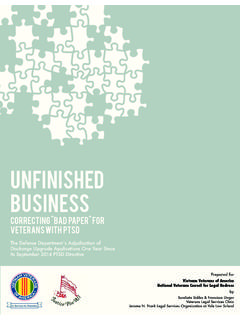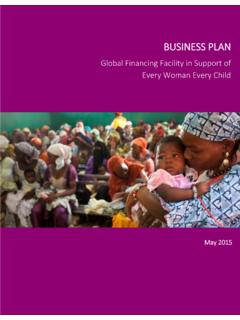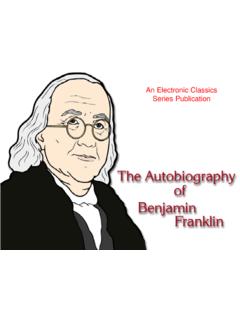Transcription of ENDINGSLAVERY - Amazing Grace
1 A RESOURCE PACKFORCITIZENSHIP, HISTORY & REENDINGSLAVERY:ANUNFINISHED BUSINESSENDINGSLAVERYC reditsAcknowledgementsAbout this bookletThis booklet is offered free of charge as a result of acollaboration between the Church Mission Society(CMS) and the Citizenship Foundation (CF).Historically, the Church Mission Society has beeninvolved for over 200 years in the campaign againstslavery, injustice and oppression in many parts of theworld as part of its wider Christian mission. The anti-slavery movement was the first major campaign inBritain to involve ordinary citizens across all classes(as well as the slaves themselves) in the struggle toend an evil practice. As such it is a good example ofhow change can come about when people worktogether for a just cause and it is offered in the hopethat young people will be inspired and equipped totake a stand against the continuation of slavery andinjustice in the world supportWe have been able to make this resource available asa result of the support of many people, in particularWalden Media who last year produced The Lion, theWitch and the Wardrobe and who will, next year,release a major film about the life and work of WilliamWilberforce,a leading anti-slave trade has generously made available some clipsfrom the film for teachers to download free and use inconjunction with this booklet and the dedicatedteacher s guide which was sent to every school as acompanion to this booklet.
2 To access these clips go and/or check theteacher s guide to the also the advocacy about the Church Mission SocietyThe Church Mission Society was founded in 1799 (asthe Church Missionary Society) by a number ofAnglicans who saw the abolition of injustice as anintegral part of their Christian duty to evangeliseworldwide. Amongst those present at the first meetingwere William Wilberforce (who also, incidentally,founded the RSPCA) and John Newton, in whosehouse the meeting was that time, over 9000men and women have worked for CMS in 26 countriesin Africa, Asia, Europe and the Middle East. Manyprojects focus specifically on setting people free fromthe chains of injustice, poverty, addiction and modernday slavery which continues to bring misery to millionsof people. For more about CMS and other projectsrelated to ending slavery and addiction (including Free for All and Setting Captives Free) go to about the Citizenship FoundationThe Citizenship foundation was founded in 1989 to workfor better citizenship education, principally throughcurriculum development and teacher training.
3 Its coremission is to promote engaged, informed and criticalcitizenship, based on the values of democracy, justice andhuman rights. CF offers a wide range of projects, servicesand products to support citizenship education for all agegroups and across formal and informal settings. For moreinformation go to by: Terry FiehnEdited by: Don RoweDesign: Nomad GraphiqueThis pack has been produced with the generous supportofWesthill Endowment Trust. For more information on thework ofthe Trust, see and CF also wish to thank Anita Matthews of ChurchMission Society,Suzanne Schwarz ofLiverpool JohnMoores University and Marylynn Rouse of The JohnNewton editors acknowledge the following permissions to usecopyright effort has been made to trace theowners of copyrights but where this has not beenpossible, copyright owners should contact the editors atthe addresses Mariners Museum, Newport News, Virginia, p 7 imageB;Anti-Slavery International pp 7 image D and 9 slaveship; Mary Evans Picture Library p 9; The Bridgeman ArtLibrary, pp 10, 11,14, 20, 23, 24, 36, 37; NationalMuseums Liverpool p 22 and cover (manillas); WedgwoodMuseum Trust pp 25 and 35; Hull County Council p 35;Brooklyn University p 38; Cornell University Library p 39;Noel Collection p 40;Norwich Castle Museum, p 42.
4 TheJohn Newton Project p 44. 2006 Church Mission Society and CitizenshipFoundationISBN 978-0-9530185-7-3 2006 Church Mission Society and Citizenship Foundation. Materials may be copied or altered for educational Gee StreetLondon EC1V 3 RSCharity reg no 801360 Church MissionSociety157 Waterloo RoadLondon SE1 8 UUCharity reg no 220297 ENDINGSLAVERY3 2006 Church Mission Society and Citizenship may be copied or altered for educational PACKFORCITIZENSHIP, HISTORY & REENDINGSLAVERY:AN UNFINISHED BUSINESSENDINGSLAVERY4 2006 Church Mission Society and Citizenship may be copied or altered for educational One Lesson TwoLesson ThreeLessons Four/FiveLesson SixLesson SevenInformation Sheet 1 Information Sheet 2 Information Sheet 3 Information Sheet 4 Information Sheet 5 Information Sheet 6 Information Sheet 7 Information Sheet 8 Information Sheet 9 Information Sheet 10 Information Sheet 11 ReferencesSlavery across time and placeThe Transatlantic Slave TradeWhy did people in Britain support slavery?
5 The campaign to abolish slaverySlavery TodayThe campaign against modern slaveryThomas ClarksonWilliam WilberforceOlaudah EquianoSlave resistance and revoltElizabeth HeyrickWomen against slaveryCitizens against slaveryThe sugar boycottThe story of The ZongThe John Newton storySlavery and global action5681518263335363738394041424344464 7 ContentsENDINGSLAVERY5 IntroductionIntroductionThe year 2007 marks the bicentenary of the Act ofParliament abolishing the transatlantic slave trade,passed in 1807. It took another twenty six years beforean Act in 1833 (brought into force in 1834) abolishedthe institution of slavery throughout the British Empireand a further five years before slaves were trulyemancipated in 1838. The campaign to achieve this -the anti-slavery movement - was the first example of anextra-Parliamentary campaign in which a broad rangeof British citizens were involved.
6 It was perhaps themost successful pressure group in modernparliamentary , slavery in a wide variety of forms continuestoday. People throughout the world are forced againsttheir will and under threat of punishment and physicalabuse to work as sex slaves, child soldiers, bondedlabour, forced labour and in other types of work. Thereis still a campaign to be fought and much work to bedone. This involves bringing pressure to bear ongovernments to stop slavery in the areas under theircontrol and to support people who have escapedslavery. It also means campaigning for fairer, moreequitable international trade and economicarrangements to help alleviate the poverty whichunderpins many aspects ofmodern materials are designed to link the campaign inBritain at the end of the eighteenth and beginning ofthe nineteenth centuries to the campaign againstslavery today.
7 What is remarkable is how modern themethods used by the early campaigners were - forminga pressure group to lobby MPs, informing the public bynewsletters, holding meetings, using investigativereporting,petitions, local action groups, using productsto promote the campaign and consumer boycotts allof which would be familiar aspects of present daycampaigns. Studying the anti-slavery movementprovides a perfect vehicle for students to learn aboutpressure groups and the tactics they use to influencegovernment and decision materials have a strong citizenship do not attempt to cover the history of thetransatlantic slave trade itself nor of life on plantationsin British colonies. There are plenty of good accounts ofthese in modern history textbooks and in othermaterials which will already be in use in focus here is on the way in which individuals, smallgroups and large groups can take action to bring aboutchange.
8 As Margaret Mead said: Never doubt that asmall group of thoughtful, committed citizens canchange the world. The materials could be used in discrete citizenshiplessons, particularly the lessons dealing with modernslavery. They would also fit well into lessons in thehistory or RE classroom where the teacher wished tomake a significant and identifiable contribution tocitizenship within the school curriculum. In any case thecitizenship teacher should talk to the cooperatingdepartment to find out what is taught in respect of thetransatlantic slave trade. It makes sense to teach acombined unit with the history teacher focusing on themore specifically historical elements and the citizenshipor RE teacher focusing on campaigning and on regard to the National Curriculum CitizenshipProgrammes of Study at key stages 3 and 4, thematerials fit very happily into the following areas human rights, pressure groups, campaigning, takingaction, participation, skills of enquiry andcommunication, presenting reasoned argument anddeveloping discussion of materialsThese materials are targeted at students in years 9 and10.
9 They aim to: Deepen students understanding of the eventscommemorated by the bicentenary of the abolitionof the slave trade Increase students knowledge of the campaign toend slavery in the end of the eighteenth andbeginning ofthe nineteenth centuries Link the campaign to abolish slavery then with thecampaign to fight slavery today Develop students understanding of pressuregroups and the methods they use to influenceParliament and decision makers Raise awareness ofmodern day slavery and thecampaign against materials employ a range of teaching andlearning methods matching exercises, card sorts,narrative, role play, use of ICT, writing, makingpresentations which are designed to motivate andengage students ofa wide range of abilities. Theactivities encourage students to work together in pairsand small groups and so more able students will beable to support those who may find some informationsheets challenging.
10 The main form of differentiationused is differentiation by outcome rather than by taskbut the activities allow students to participate at theirlevel of devices have been used to make the materialsmore accessible such as alternative, simpler cards inActivity 2, but teachers may wish to simplify some ofthe information sheets to meet the needs of theirstudents. There are a number of opportunities providedwhich allow more able students to pursue their ownresearch and deepen their understanding ofthe slavetrade and the anti-slavery campaigns of the past and inthe present day. 2006 Church Mission Society and Citizenship may be copied or altered for educational across time and placeIt isimportant that students understand that slavery isnotlocated in a particular time period and place, slavery involving enslaved Africans in the17th, 18th and 19th centuries.






